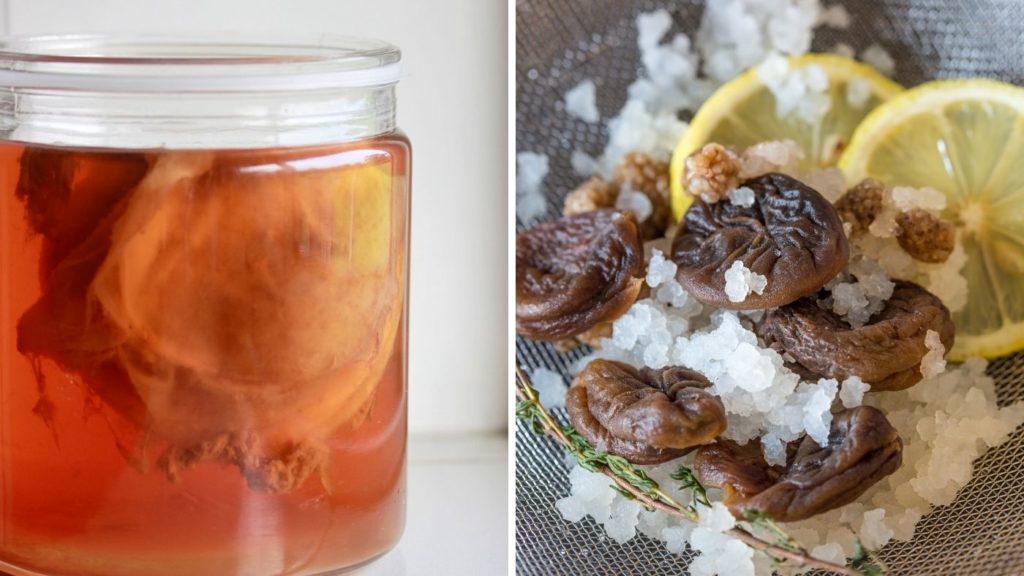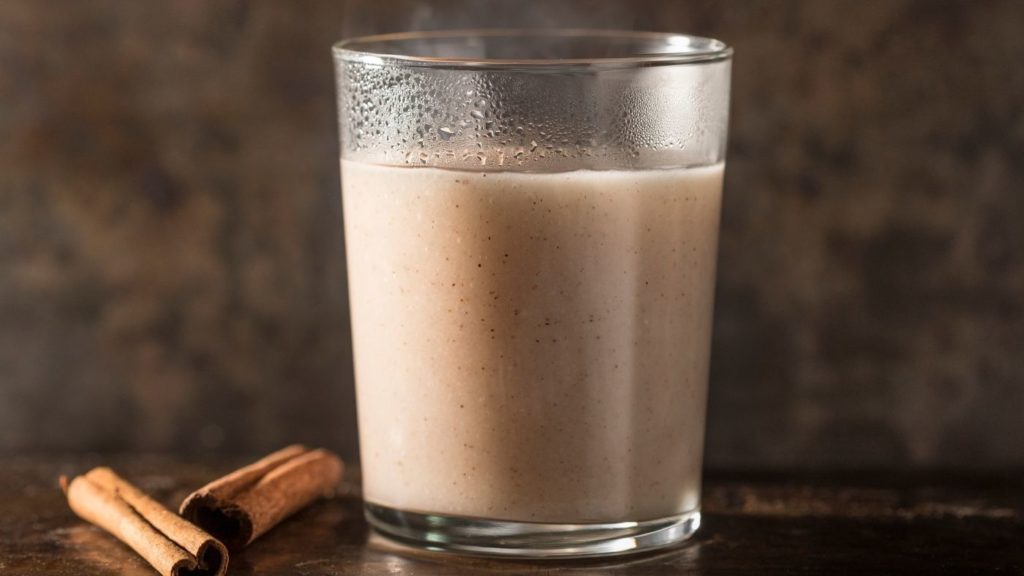Tepache is a fermented and fizzy beverage made from pineapple peels.
That’ s right! Pineapple peels, which are usually discarded in the compost, can be used to make a delicious summer beverage with zero waste.
Tepache, sometimes called “pineapple beer”, is incredibly easy to make:
- Mix pineapple peels, sugar, and water in a jar.
- Let it ferment for a few days, stirring daily.
- Bottle and enjoy!
The result is an effervescent, fresh, and slightly acidic tropical beverage with a good pineapple taste and hints of caramel. A real delight, which brings sunshine into our glass!
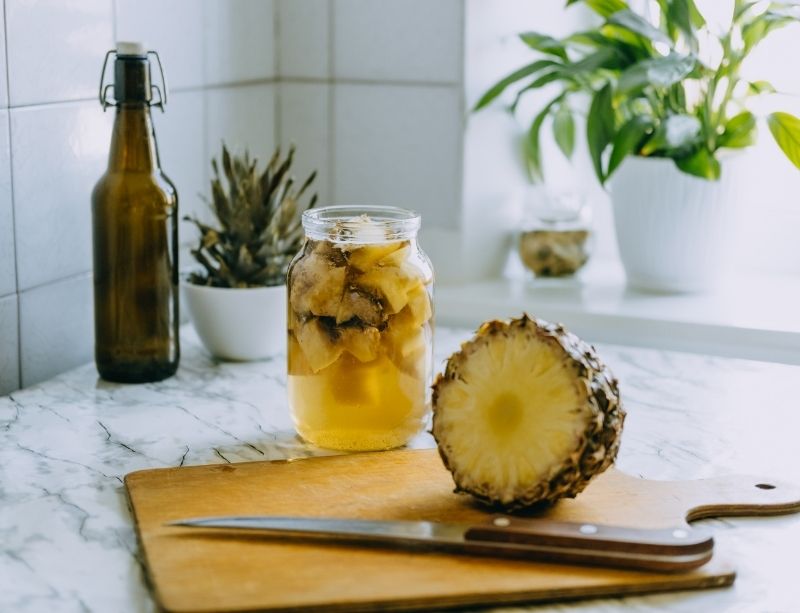
Where Does Tepache Come From?
Tepache traces its origins back to pre-Columbian Mexico, where it was initially made from corn. The term “tepache” actually comes from the word “tepiatl”, meaning a mix of water and corn. Today, this traditional corn-based version is still popular in Mexico under the name “pozol”. However, modern tepache is mainly made with pineapples, sometimes mangoes, and is spiced and sweetened with sugar.
What Are the Ingredients for Tepache?
Pineapple
Unlike kombucha or water kefir, pineapple beer does not need a starter culture. The yeast needed for fermentation is already on the pineapple. That is why it is recommended to choose an organic pineapple (although this is not essential).
Sugar
Traditional tepache uses unrefined cane sugar, piloncillo, also called panela or rapadura. These sugars provide a caramel-like flavour.
However, any sugar will do, white sugar, cane sugar, coconut sugar, brown sugar, etc.
Avoid using “fake sugars” in your tepache, such as erythritol (Splenda). It won’t work because yeast can’t draw energy from these sugars!
Spices
Plain tepache is delicious as is, but we like to add cinnamon, cloves, ginger, or star anise to give it an extra kick.
For the more adventurous, slip a hot pepper into your fermentation jar!
Water
The quality of the water will have a direct impact on the taste of your tepache. If your tap water is highly chlorinated, let it sit on the counter to let the chlorine evaporate.
For more information, see Which Is the Best Water for Fermenting?
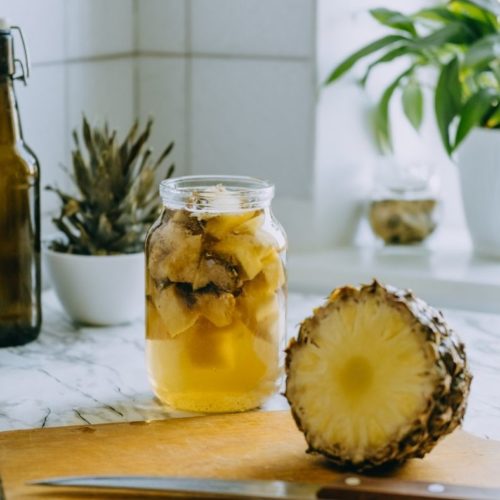
Tepache Recipe (Pineapple Beer)
Equipment
- 1 Large spoon
Ingredients
- 1 ripe organic pineapple
- 1 cup sugar (see note)
- 1 cinnamon sticks
- 4 cloves
- 3 slices fresh unpeeled ginger (large slices)
- 1 small hot pepper (optional)
- 8 cups water
Steps
Preparation
- Rinse the pineapple roughly. Cut off the stem and top and dispose of them in the compost.
- Cut the pineapple skin into large sections. Set aside. Separate the flesh from the core and save the pineapple flesh for another recipe.
- Put the pineapple skin and core in the jar. Add sugar and spices, then cover with water up to about 5 cm (1.5 inches) from the rim.
- Stir with a large spoon until the sugar is dissolved.
- Close the jar with the lid.
Fermentation
- Ferment for 2 to 5 days at room temperature. Shake the jar daily or stir with a wooden spoon.
- When bubbles appear and you like the taste, filter the tepache to remove the pineapple and spices.
- Don't let it ferment too long, as this can alter the taste.
Bottling
- Bottle the tepache in pressure resistant bottles.
- Let it stand at room temperature for a day or two, or until the fizz is to your liking. Beware, tepache is known to be explosive!
- Tepache stays delicious for a few days in the refrigerator.
Notes
Any questions? Read on!
Frequently asked questions
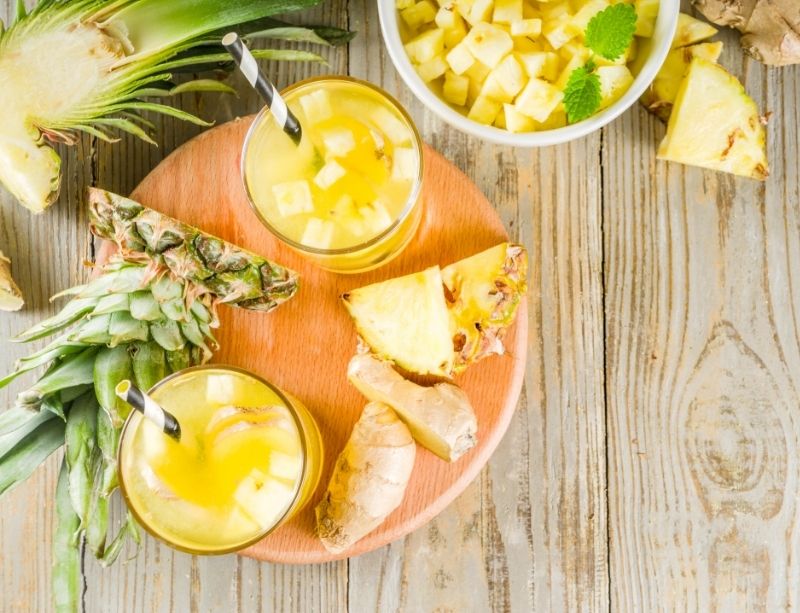
How Do I Drink Pineapple Beer?
Tepache is drunk as is. It is best (in our opinion!) chilled, or on ice.
You can also use tepache in cocktails: it is delicious with a little spiced rum or as a substitute for pineapple juice.
How to Store Tepache?
Tepache can be stored for several weeks in the fridge. It is best kept fresh, and its taste may change over time.
Can I Reduce the Amount of Sugar in My Tepache?
Yes, but add the pineapple flesh to the recipe to give the yeast enough sugar. Feel free to experiment with spices and sugar types!
Is the White Foam on the Surface of the Tepache Normal?
Yes, during the fermentation process a lot of foam can form on the surface. Remove it as you go along, or before bottling.
To prevent mould from forming, stir daily to submerge any protruding pineapple pieces.
How Do I Know if My Tepache Is Ready?
Tepache is a fast fermenter! After 2 to 5 days, tepache will be bubbly and delicious. It is a beverage that can be consumed quickly.
Why Does My Tepache Taste Like Vinegar?
It has fermented too long. At room temperature, tepache develops quickly and can turn to vinegar.
It is not lost! Use it as a table vinegar for your summer salads, or in your “sour” cocktails.
Does My Tepache Contain Alcohol?
Usually, the alcohol content of a tepache is between 1% and 3%. For experienced fermenters!
If you want less alcohol, don’t add sugar and/or ferment for a shorter time.
Can I Reuse My Pineapple Peels for a New Tepache Recipe?
Yes, the peels can be reused 2 or 3 times to make tepache again. Add new spices, sugar, and water, and let it ferment! Be careful, the taste may become sulphurous if the peels are reused.
Why Is My Tepache Sticky?
If your tepache is sticky or slimy, it has unfortunately been contaminated by bacteria. Although it is harmless and the tepache can be consumed, it is not pleasant to drink!
Thoroughly disinfect all the instruments that have touched your tepache and start again with a new pineapple.
Why Does My Tepache Smell of Sulphur?
Sometimes tepache smells like sulphur. This may be due to wild yeast or traces of sulphur in the ingredients. This problem usually occurs with longer fermentations.
However, you should know that the tepache produced is still completely edible!
